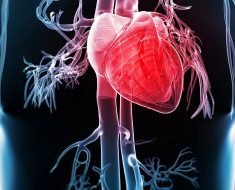
As scientists delve deeper into the mechanisms that lie beneath difficult-to-treat conditions such as diabetes and Alzheimer’s disease, they pick away at the edges of science, reaching for loose threads and poking their fingers into dimly lit nooks.
But because answers from fresh angles are not always forthcoming, it is well worth doubling back every once in a while, opening old doors and revisiting familiar faces.
Recently, for instance, a new organ was “discovered” hiding in plain sight. The interstitium — a system of fluid-filled bags — is now considered one of the body’s largest organs.
Previously, the interstitium was thought to be fairly inconsequential; little more than anatomical glue paper supporting proper organs doing proper work. But when cutting edge imaging techniques zeroed in, its size and importance became clear.
Now, scientists are asking what it can teach us about edema, fibrosis, and cancer’s troublesome ability to spread.
In research, everyone knows that no stone should be left unturned. The interstitium, however, reminds us that they should be turned multiple times and at regular intervals.
In this article, we cover some familiar aspects of cellular biology that are being revisited and providing unfamiliar ways to understand disease.
Microtubules: More than scaffolding
Running through the cytoplasm of each and every cell is a complex network of proteins called the cytoskeleton, a term first coined by Nikolai Konstantinovich Koltsov in 1903. One of the primary constituents of the cytoskeleton is long, tubular proteins called microtubules.
Microtubules help keep the cell rigid, but they also play pivotal roles in cell division and the transport of compounds around the cytoplasm.
Microtubule dysfunction has been linked with neurodegenerative conditions, including the big two: Parkinson’s and Alzheimer’s diseases.
Neurofibrillary tangles, which are abnormally twisted threads of a protein called tau, are one of the hallmarks of Alzheimer’s. Usually, in conjunction with phosphate molecules, tau helps sure up microtubules. In Alzheimer’s neurons, however, tau proteins carry up to four times as much phosphate as normal.
Hyperphosphorylation reduces the stability and the rate at which microtubules are manufactured, and it can also cause microtubules to be disassembled.
Exactly how this alteration in microtubule production leads to neurodegeneration is not fully understood, but researchers are interested in seeing whether intervening in these processes might one day help treat or prevent Alzheimer’s disease.
Issues with microtubules are not reserved solely for neurological conditions. Since the 1990s, scientists have been discussing whether they might be at the root of cellular changes that lead to heart attack.
The most recent study to look at this question concluded that chemical changes to the microtubule network of heart cells made them stiffer and less able to contract as they should.
The authors believe that designing drugs that target microtubules might eventually be a viable way of “improving cardiac function.”

The role of mitochondria in Parkinson’s disease has received the most attention.
In fact, over the years, a variety of mitochondrial failures have been implicated in the development of Parkinson’s.
For instance, issues can arise in the complex chemical pathways that generate energy in mitochondria, and mutations can occur in mitochondrial DNA.
Also, mitochondria can be damaged by a buildup of reactive oxygen species that are produced as a byproduct of energy production.

The microbiome’s influence on health and disease is a convoluted web of interactions that we are only just starting to unravel.
And when the virome — our resident viruses — is added to the mix, it becomes exponentially labyrinthine.
Knowing how important bacteria are in sickness and in health, it requires only a small leap of the imagination to consider how bacteriophages — which are specific to different strains of bacteria — may one day be medically useful.
In fact, bacteriophages were used to treat infections in the 1920s and ’30s. They fell out of favor primarily because antibiotics, which were easier and cheaper to store and produce, appeared on the scene.
But with the peril of antibiotic resistance rearing its head, a move back toward bacteriophage therapy might be on the cards.
Bacteriophages also have the benefit of being specific to one bacterium, as opposed to antibiotics’ broad sweep across many species.
Although the resurgence of interest in bacteriophages is new, some already see a potential role in the fight against “cardiovascular and autoimmune disease, graft rejection, and cancer.”

Recent investigations concluded that understanding these regions could help us get to grips with how antidepressants work.
G proteins — which are signal-transmitting cellular switches — become deactivated when they drift into lipid rafts. When their activity drops, neuronal firing and communication is reduced, which, theoretically, could cause some symptoms of depression.
On the other side of the coin, antidepressants have been shown to shift G proteins back out of lipid rafts, thereby reducing depressive symptoms.
Other studies have investigated the potential role of lipid rafts in drug resistance and metastasis in pancreatic and ovarian cancer, as well as the cognitive slow-down on the way toward Alzheimer’s disease.
Although the double-layered structure of the lipid membrane was first uncovered in the middle of the last century, lipid rafts are a relatively new addition to the cellular family. Many questions about their structure and function are, as yet, unanswered.
Good things come in small packages
In short, extracellular vesicles are tiny packages that ferry chemicals between cells. They help communicate and play a part in processes as varied as coagulation, cellular aging, and the immune response.
Because they carry messages to and fro as part of such a wide array of pathways, it is no wonder that they have the potential to go awry and become embroiled in disease.
Also, because they can carry complex molecules including proteins and DNA, there is every chance that they might shuttle disease-specific materials — such as the proteins involved in neurodegenerative diseases.
Tumors also produce extracellular vesicles, and, although their role is not yet fully understood, it is probable that they help cancer set up shop in distant locations.
If we can learn to read these intercellular smoke signals, we could gain insight into a myriad of disease processes. In theory, all we need to do is tap into them and break the code — which, of course, will be a monumental challenge.

Below the fold
If you took biology, you may have a dim recollection of the pleasing-to-pronounce endoplasmic reticulum (ER). You might also remember that it is an interconnected network of flattened sacs within the cytoplasm, nestled close to the nucleus.
The ER — first glimpsed under a microscope in the late 1800s — folds proteins and prepares them for life in the harsh environment outside the cell.
It is vital that proteins are folded correctly; if they are not, the ER will not transport them on to their final destination. In times of stress, when the ER is working overtime, misfolded or unfolded proteins can build up. This triggers a so-called unfolded protein response (UPR).
A UPR attempts to bring normal cellular functioning back online by clearing up the backlog of unfolded protein. To do this, it prevents further protein production, breaks down badly folded protein, and activates molecular machinery that can help crack on with some folding.
If the ER does not manage to get back on track and the UPR fails to bring the cell’s protein situation back in line, the cell is marked for death by apoptosis, a type of cell suicide.
ER stress and the consequent UPR have been implicated in a range of diseases, one of which is diabetes.
Insulin is manufactured by pancreatic beta cells, and because production of this hormone varies across the course of a day, pressure on the ER rises and falls — meaning that these cells rely on efficient UPR signaling.
Studies have shown that high blood sugar puts increased pressure on protein synthesis. If UPR cannot manage to get things back on track, beta cells become dysfunctional and die. As beta cell numbers dwindle, insulin can no longer be created when needed, and diabetes will develop.
These are fascinating times to be involved in biomedical science, and as this brief glimpse proves, we still have much to learn, and covering old ground can be just as useful as carving out new horizons.
Source: Read Full Article





